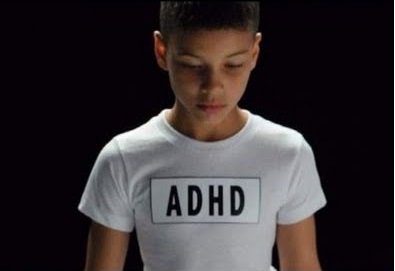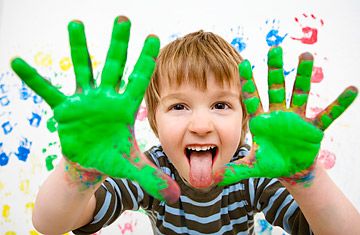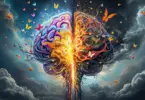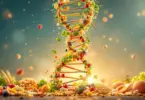
By Cortland Pffefer (with Irwin Ozborne)
Contributing writers for Wake Up World
The belief that increasing dopamine levels will alleviate ADHD symptoms is why kids are treated with stimulants. There’s just one problem with the theory: it isn’t true.
On a trip to the zoo, there appeared to be a small gathering outside the wolverine display. As we approached we noticed this poor creature in a dead-sprint back-and-forth along and eight foot ledge. While the children found amusement in the wolverine’s bizarre behavior, most of the adults were able to show compassion for the “sick animal.”
“Oh he is still doing that,” said one of the adults behind me.
“Still!?” I asked, “How long has he been doing this?”
“Well, he was doing it last week, too.”
For over a week, this animal was sprinting back-and-forth on an eight foot ledge. Wolverines in the wild travel up to fifteen miles per day, and this one is in captivity in a space the size of an average living room.
The question is: Is the Wolverine suffering a disease? Or is it a product of an unnatural environment?
[pro_ad_display_adzone id=”110028″]
There is actually nothing unnatural about the wolverine’s behavior based on its circumstance. A few more displays down the walkway and there is the black bear similarly pacing on a rock for the past month. The black bear also resides in an enclosure which is approximately 0.0018 percent of the natural habitat. Each and every day, they live in these crowded and unnatural quarters to have visitors pound on the glass, stare, point, laugh, make faces, and mocking this animal’s miserable existence as a prisoner.
These examples of what is termed zoochosis are quite obvious; these animals are not sick, but in fact they are intelligent enough to realize, despite their limited experience, that they are prisoners and there is much more to life than this constrained existence they have been presented. The animals start to get stressed, anxious and erratic, and display symptoms of psychosis. Something that quite rarely takes place in natural habitats – but is all too common in zoos.
If these animals were children today, they would most certainly fit the diagnosis for an array of mental “disorders”. Most likely, they would leave a psychiatrist’s office with the most prevailing diagnosis of children today – Attention Hyperactivity Deficit Disorder (ADHD).
I returned to the zoo a few weeks later out of curiosity to check on the wolverine, but he wasn’t there. I went back a few more weeks later and he still was not on display. Eventually, about two months after our first encounter, I saw him back in his “home.” He was digging, playing in the water, and more entertaining for the customers to observe. While I could not get a straight answer from the zookeepers or staff, Like humans in psychiatric care, the common treatment is to put these animals in an even smaller cell while doping them up on psychotropic drugs, to help them cope with the life of captivity. After some research I learned that, much like humans, billions of dollars are spent each year on psychiatric medications that make wild animals behave more “normally” while they live an unnatural life behind bars, for humans to observe.
ADHD Stats
By definition, ADHD refers to a persistent pattern of inattention and/or hyperactivity and impulsivity that interferes with a child’s functioning and development.
More than one in nine children from ages 4 to 17 are diagnosed with ADHD today, with two-thirds of those being boys. In the early 1990’s, less that 5-percent of children in the U.S. were diagnosed with ADHD. In 2003 it jumped to 7.3%, then 9.5% by 2007, more than 11% by 2011, and climbing. The average age of ADHD diagnosis was 7 years of age. Two out of every three children diagnosed with ADHD is being treated with psychotropic medications. [source: Centers for Disease Control]
So, with such a high prevalence of ADHD diagnosis among young children, it is important to understand the disorder. What is it? How does it come about? How do we treat it?
The Chemical Imbalance Theory
This theory states that ADHD is created by a chemical imbalance in the brain, suggesting that people with ADHD have lower levels of dopamine. Naturally, the fix to such an imbalance would include finding way to raise the level of dopamine in the brain, which would make the symptoms vanish.
The belief that increasing the dopamine levels will alleviate the symptoms of ADHD is why treating kids with stimulants is the primary treatment method; Ritalin, Concerta and Adderall are the most commonly prescribed drugs to children. Each one contains different formulations of methylphenidate, a powerful psychostimulant drug that works very similarly on the brain as cocaine and methamphetamine, by blocking a dopamine transporter and causing dopamine to build up in the synapse. This creates alertness and productivity.
There is just one small problem with the theory — it is not true. The chemical imbalance theory that is applied across the board to mental health “disorders” has never been scientifically proven, and yet we have been bombarded with symptom-focused Direct-to-Consumer pharmaceutical advertising for the past twenty years that tells us “[insert mental disorder here] may be caused by a chemical balance in your brain… [insert Drug here] can help fix that imbalance.” The public has accepted it, and an under-resourced psychiatric profession has helped to propagate it.
This theory started by accident in 1952 when a group of tubercular patients became euphoric when treated with the medication Iproniazid. It was established that this drug raised levels of epinephrine and norepinephrine in the brain. Then in 1955, it was discovered that reserpine depleted the brain of 5-Hydroxytryptophan, a precursor in the biosynthesis of the neurotransmitters serotonin and melatonin, therefore decreasing levels of serotonin, dopamine, and norepinephrine in animal studies. The animal subjects showed signs of catatonic symptoms, such as inactivity and hunched over posture etc. Scientists concluded that depression was therefore a cause of chemical imbalance. [source]
However, this theory has never been proved in humans. Furthermore, it has not been demonstrated why common depression drugs do not alleviate depression almost immediately, since they create a maximum increase in serotonin and dopamine within two days. The fact is, most depressive patients do not have low levels of serotonin; some drugs that have nothing to do with serotonin or norepinephrine can alleviate depressive symptoms; stimulants that work on increasing dopamine and serotonin do not work for depression; some patients diagnosed with depressions actually have high extremely high levels of serotonin; and there is not one single peer reviewed article that can support claim of a neurotransmitter deficiency in any mental disorder.
With regard to ADHD specifically, there are no scans used, nor X-rays nor any evidence of chemical imbalance. ADHD is “diagnosed” via a set of questions which are subjectively interpreted by a psychologist or psychiatrist in a brief consultation. Essentially, if your behavior matches the currently defined spectrum of symptoms, the doctor tells you that you have ADHD, and begins to treat you for a chemical imbalance in your brain.
But, if such an imbalance existed, how can you know that just by asking questions? Diagnosing ADHD really comes down to a matter of opinion, as there is no physical test in common usage that can pinpoint the condition.
Dr. Fred Baughman, a child neurologist with over 35 years of experience in the field, says that ADHD is a fraud crafted by drug companies and maintained by the child psychiatric industry. “Psychiatry has never validated ADHD as a biologic entity,” Dr. Baughman told PBS, “so their fraud and their misrepresentation is in saying to the parents of the patients in the office, saying to the public of the United States, that this and every other psychiatric diagnosis is, in fact, a brain disease.” [source]
Notably, recent developments in brain scan technology have actually served to disprove the chemical imbalance theory, as detailed in this article from the University of Cambridge: Imaging study shows dopamine dysfunction is not the main cause of Attention Deficit Hyperactivity Disorder (ADHD).
Professor Trevor Robbins, co-author of the study and Director of the BCNI [Behavioural and Clinical Neuroscience Institute], said: “These findings question the previously accepted view that major abnormalities in dopamine function are the main cause of ADHD…”
You can read the full study published in Brain: The Journal of Neurology.
Today, following intense pressure from critics of the chemical imbalance theory, psychiatry is finally retreating from its long-held position. For instance, Dr. Fred Baughman, board certified neurologist/child neurologist and author of the book The ADHD Fraud — How Psychiatry Makes “Patients” of Normal Children, has testified widely, including hearings at the US Food and Drug Administration (March 2006) and the Congress of Mexico (March 2006), that there is no proof that any psychiatric disorders have been scientifically validated.
However, the psychiatric establishment is slow to acknowledge these facts. As noted by retired psychologist Philip Hickey Ph.D in an article for Mad In America;
… instead of acknowledging that this notion was flawed, that they knew it was flawed, and that they promoted it for self-gain, they [the psychiatric profession] are claiming that they never really said it in the first place.”
The fact is that psychiatry, at both the organized and individual level, did promote, in characteristically dogmatic fashion, the notion that depression and other significant problems of thinking, feeling, and/or behaving are caused by chemical imbalances in the brain, and are best treated by drugs and other somatic measures. Nor was this an innocent error. They promoted this fiction even though they knew that it was false, because it suited their purposes and the purposes of their pharmaceutical allies.
This falsehood was promoted vigorously by psychiatrists and by pharma, and tragically has been accepted as fact by two generations in western countries and increasingly in other parts of the world. [source]
However, according to widely published psychiatrist Ronald Pies MD, the chemical imbalance theory never existed:
I am not aware of any concerted effort by academic psychiatrists, psychiatric textbooks, or official psychiatric organizations to promote a simplistic chemical imbalance hypothesis of mental illness.
This is clearly untrue, and does not reflect the public opinion created by the psychiatric and medical establishments over the course of several decades. Despite the denial of the likes of Dr. Pies, countless statements have been published in family-oriented magazines – not peer reviewed journals – advising parents of the chemical imbalance theory:
- In the last decade, neuroscience and psychiatric research has begun to unlock the brain’s secrets. We now know that mental illnesses – such as depression or schizophrenia … [are] real diseases caused by abnormalities of brain structure and imbalances of chemicals in the brain. Unlocking the Brain’s Secrets, by Richard Harding, MD, then President of the APA, in Family Circle magazine, November 20, 2001, p 62.
- “More serious depression, or depression that is quickly getting worse, should be treated with medication. Antidepressants are not “uppers” and they have no effect on normal mood. They restore brain chemistry to normal.” About Depression in Women, by Nada L. Stotland, MD, Professor, Departments of Psychiatry and Obstetrics/Gynecology, Rush Medical College Chicago, and subsequently President of the APA. Op.Cit., p 65.
- “ADHD often runs in families. Parents of ADHD youth often have ADHD themselves. The disorder is related to an inadequate supply of chemical messengers of the nerve cells in specific regions of the brain related to attention, activity, inhibitions, and mental operations.” Paying Attention to ADHD, by Timothy Wilens, MD, Associate Professor of Psychiatry at Harvard Medical School, and Psychiatrist at Massachusetts General Hospital. Op. Cit., p 65
Now, as the profession begins to wise up to the failure of the chemical imbalance theory, it appears (as Philip Hickey noted) that “most of psychiatry’s so-called thought leaders are just letting this particularly shameful episode of their history die a natural death.”
And about damn time, too!
ADHD? Prove It…
A Rat in a Maze
“There’s a tremendous push where if the kid’s behavior is thought to be quote-unquote abnormal — if they’re not sitting quietly at their desk — that’s pathological, instead of just childhood.” ~ Dr. Jerome Groopman, Professor of Medicine at Harvard Medical School and author of How Doctors Think.
There was a kid that I coached on a youth baseball team years ago whose story I would like to share with you.
Before taking this position, I was repeatedly told of one standout player, Jonah. He is the one that is going to take this team to the next level, he is the leader of the team, and a natural athlete.
On the first day of practice, while going over the team rules and expectations, Jonah appeared to be spacing out. Was he not paying attention? Did he think he already knew everything? Did he have superstar-syndrome and think he was above everyone else?
Then on the field, it was even worse. He was dropping balls, struggling to make contact at the plate, and just looked out of place on this team. It couldn’t possibly be the same kid that everyone had told us about.
Once the games started, the problems escalated with ongoing mental mistakes, an inability to do the basic things such as throwing and catching the ball, always striking out, forgetting simple signs, and essentially costing the team a couple of games.
After dropping a ball that would have secured a victory, Jonah went running off the field in embarrassment without shaking hands or consoling with his team. He just sat underneath a tree in the distance for about six hours, weeping and blaming himself for the loss.
At this point, it was clear this was more than a baseball issue. It turned out that Jonah’s parents were divorcing and he was scared and confused. He was being forced by his parents to take sides in an ugly custody battle and lives in a non-stop chaotic environment.
[pro_ad_display_adzone id=”110030″]
It’s is like putting a rat in a maze and then setting the maze on fire. How would you expect the rat to behave? Jonah’s unsettled mind left him running back and forward, unable to find an exit. And like the wolverine or black bear at the zoo that has been captured, he was living in an unnatural environment at home, and then put on display — as a star player — for people to ultimately mock when his behavior did not meet the expectations of him.
Jonah had also been struggling at school all year; the effects of the chaos and pressures around him at all times had created an inability to focus throughout the day. We saw it in the baseball field and could only imagine the difficulty he experienced staying put in a classroom all day. Jonah’s circumstances were all too much for his young mind to cope with. His teachers made note of Jonah’s inability to focus and notified his parents who had him “tested”. He was diagnosed with ADHD and prescribed Ritalin.
The History of ADHD
Prior to 1900, symptoms of ADHD were believed to be a cause of poor parenting and the best cause was to provide these children with more discipline. In 1902, Sir George Still suggested that symptoms related to an inherited behavioral disorder from parents who have had a history of psychiatric problems. Later symptoms now associated with ADHD were thought to be the cause of brain damage, and in 1937 it was shown that stimulants helped to alleviate the symptoms. Ritalin was the first stimulant medication approved for the symptoms of ADHD in 1955.
Certainly, once the drug was approved, a sharp increase diagnoses would ensue. An official disorder (to go along with the new medication) was finally recognized in the second edition of the DSM in 1968, which was called “hyperkinetic impulse disorder.” In 1980, the name was changed to Attention Deficit Disorder (ADD); then in 1994 the symptom of hyperactivity was added to the definition, and the name became Attention Deficit Hyperactivity Disorder (ADHD).
In 1996, the stimulant/amphetamine Adderall was introduced to treat the so-called disorder, and once again diagnoses skyrocketed.
 Today, more than one in nine children are diagnosed with ADHD. Nearly seventy-percent of all children diagnosed are on some form of medication – mostly stimulant or amphetamine based – to treat this diagnosis. Less than one in three children diagnosed with ADHD received behavioral therapy. [source] Says Dr. William Graf, a pediatric neurologist in New Haven and a professor at the Yale School of Medicine:
Today, more than one in nine children are diagnosed with ADHD. Nearly seventy-percent of all children diagnosed are on some form of medication – mostly stimulant or amphetamine based – to treat this diagnosis. Less than one in three children diagnosed with ADHD received behavioral therapy. [source] Says Dr. William Graf, a pediatric neurologist in New Haven and a professor at the Yale School of Medicine:
Those are astronomical numbers. I’m floored… Mild symptoms are being diagnosed so readily, which goes well beyond the disorder and beyond the zone of ambiguity to pure enhancement of children who are otherwise healthy. [source]
Dr. Andrew Adesman, chief of developmental and behavioral pediatrics at the Steven & Alexandra Cohen Children’s Medical Center of New York, agrees:
To the extent that problems with inattention, impulsivity, and restlessness can vary wildly in severity, it is likely that the increased number of children and adolescents diagnosed with ADHD reflects a greater number of youth with mild problems being diagnosed and treated.
Under the guise of the false chemical imbalance theory, we have allowed psychiatric profession to create a “disorder” based on symptoms without ever knowing the cause. While the medical establishment shrugs its shoulders, unable to determine a scientific cause for such a sharp increase, the one factor that has actually changed over the past few decades is the ready availability and social acceptability of ADHD medications. The pharmaceutical industry has been allowed to profit from false claims that there is a chemical imbalance in children’s brains, and the only way to cure it is to take an amphetamine; the same type of amphetamines that are considered a felony to possess. Like all good product marketers, companies search for untapped markets and seek to create customers for life. This is known as ‘cradle to grave’ marketing; a corporate term that bears an eerie interpretation when viewed in the context of the medical and pharmaceutical industry.
Psychotropic pharmaceutical drugs, like all drugs, may initially relieve children of their ‘hyperactive’ urges by artificially affecting the brain’s chemistry. But as with all consciousness-altering drugs, relief is only temporary. The brain is always working to create balance – known as homeostasis – and when conditions change, the brain’s neurology also changes, and the brain quickly develops a tolerance to the substance and the individual taking it then needs more of the drug in order to feel the same effects. Eventually, a threshold is reached at which the individual no longer feels any effect and cannot be prescribed an increased dosage; the drug becomes the ‘new normal’. Then, when you try to stop taking the drug, your body suffers serious physical, mental, and emotional effects as the body then needs to create homeostasis again, to cope without the drug. This is what is known as withdrawal.
The side-effects associated with ADHD drugs include headache, anxiety, nausea, dizziness, drowsiness, fatigue, liver damage, hallucinations, vomiting and abdominal pain, insomnia, weight loss, itching, impaired appetite, dizziness, increased risk for type 2 diabetes, and hypotension (low blood pressure), which itself may result in serious heart, endocrine or neurological disorders, as well as depriving the brain and other vital organs of oxygen and nutrients. They are also known to cause – ludicrously – restlessness, depression and even suicidal tendencies. [source / source / source] Some experts also believe that early use of the behavior-modifying drugs alters the natural arc of children’s social and creative development.
Dr. Peter Breggin, a psychiatrist from Ithaca, N.Y., elaborates:
These drugs damage developing brains. We have a national catastrophe… This is a situation where we have ruined the brains of millions of children. In controlling behavior, antipsychotics act on the frontal lobes of the brain — the same area of the brain targeted by a lobotomy… These are lobotomizing drugs. Of course, they will reduce all behavior, including irritability.
So What is Really Behind the Increase in Childhood Restlessness?
The fact is, children diagnosed with ADHD often struggle in a regimented school environment, have challenging home circumstances, or have difficulty managing interpersonal relationships. They also tend to suffer from low self-esteem. More importantly, most of the “symptoms” associated with ADHD — fidgeting, restlessness, inattention for long periods, hyperactivity, difficulty being quiet — could describe virtually any child on any given day.
In reality, most young children diagnosed with ADHD do not have a diagnosable mood disorder — they are children! Children are simply not meant to always sit still, pay attention to one thing for extended periods, or regulate their own natural moods and emotions the way “socialized” adults do. Adding to this problem, up to 40 percent of U.S. schools are now cutting back on recess — the time when children get to go outside and be children! Just like the wolverine at the zoo, it is not going to just sit down for the humans to watch it all day, it acts out in a hyperactive way because it is bored out of its mind with life in captivity. And yet, prescribing antipsychotics to 4,000,000 kids on any given school day has become the overwhelming norm.
There are certainly situations in which a person has symptoms of either inattention and/or hyperactivity-impulsivity. But does that make them sick? Or are they just in need of greater stimulation, more diverse tasks, or a different approach to learning? People with ADHD are often highly creative, original, out-of-the-box thinkers. They use intuition and have a special “feel” for life, tenacious, and carry high energy.
The late Lendon Smith, MD was an American OB/GYN, pediatrician, author and advocate of nutritional, not pharmaceutical interventions. In an interview before his death in 2001, he stated:
I was one of those drug-pushing pediatricians for a couple of decades. Then it became clear to me that there was a pattern to the behavior of these children. Genetics is there, of course, and can result in “hurts” to the nervous system, but my patients were 80% boys. I found in examining them — trying to find some common denominator that I could use as a diagnostic criterion — that they were exquisitely ticklish.
They were unable to disregard ‘unimportant’ stimuli.
That is why they have trouble in the classroom with 30 other kids burping, coughing, passing gas and dropping pencils. The teacher says, “Charlie, sit down and stop moving around.” No wonder home schooling is becoming popular. [source]
Educator and outspoken advocate for creative teaching Will Stanton elaborates:
Children are naturally creative. It’s one of the things that makes us human. The problem is we’ve been cultured out of our creativity as we’ve grown older. The problem is we have been educated. As Ken Robinson says in his book, Out of Our Minds, ‘The dominant forms of education actively stifle the conditions that are essential to creative development.’
The education system is predominantly left-brain oriented. It rewards conventionality and discourages out-of-the-box thinking. The tragedy of this kind of model is that not all children are left-brain learners, yet they are treated as such. When these children perform poorly within the academic mould they are often viewed as having a learning impediment. In many cases — and I can verify this from my own experiences in the teaching arena — these children act out and develop behavioural problems. Except they are not ‘problem’ children. They are just operating within a system that does not see them for who they are…
That simple fact is, kids do not want to pay attention to a school syllabus that does not ignite their mind, heart, and soul. Today’s school system is just a training ground for obedient future employees. It is structured in such a way that rewards kids for sitting still, doing as they are told, and memorizing and repeating “facts” they will never use outside a test environment, while punishing them for speaking out, thinking for themselves and failing to conform to the group. And as a result of this confinement, some kids act out.
But these kids do not have a dopamine deficiency, they are acting out because they are bored, uninterested and not stimulated enough — especially if they already have an “alternative” perspective on the world around them, possess advanced knowledge and insight, or have unresolved emotional experiences. Moreover, people with ADHD typically show intense focus and determination once they find their niche — something that actually interests them.
These factors aside, there are certainly genuine instances of behavioral disorders among children. Although the causes of chronic ADHD remains elusive, there are many contributing factors which are overlooked by the psychiatric profession entirely, including poor nutrition and gut-health, and environmental toxins ranging from food- and vaccine additives to agricultural chemicals. A 2006 study found that a mother’s use of cigarettes, alcohol, or other drugs during pregnancy could increase the risk for the development of ADHD symptoms. The study also suggested that exposure to lead and/or polychlorinated biphenyls (PCBs) can cause ADHD symptoms. [source] Pesticide exposure and GMO agriculture (which are inherently related) have also been linked with both autism and ADHD [source], as have diets high in sugar, pasturized dairy, gluten, fluoride, food colorings and vegetable oils, and – notably – diets low in Omega-3. [source]
A study by the University of Adelaide in Australia found that fish oil improves the symptoms of ADHD more effectively than drugs like Ritalin and Concerta and without any of the side effects.
When 130 children between the ages of 7 and 12 with ADHD were given fish oil capsules daily, behaviour dramatically improved within three months. Furthermore, after seven months, the children were not as restless and showed improvements at school in concentration and attention, reading abilities and vocabulary. When the researchers compared their results to studies of Ritalin and Concerta for ADHD, they found that fish oils were more effective. [source]
Furthermore, there are a variety of other conditions with symptoms that mimic the spectrum of symptoms ascribed to ADHD, including Hyper- and Hypothyroidism, Metabolic Disorders, Anemia, Allergies and Hypoglycemia — many of which are no doubt contributing to an increase in ADHD misdiagnoses. [source]
What is Really Behind the Increase in Diagnoses?
While we continue to rely on detrimental pharmaceutical interventions, we are drugging out our future Einsteins — just because they do not fall into the mold. The question must be asked – why?
Let’s start with the obvious cause: profit.
According to the data company IMS Health, between 2009 and 2013, the pharmaceutical industry made profits in excess of US$40 billion from ADHD drugs alone. Profits made from ADHD stimulant medications in 2012 were nearly US$9 billion, more than five times the $1.7 billion a decade before. [source / source] In 2001, worldwide revenue for pharmaceutical drugs was around $390.2 billion U.S. Ten years later (2011), this figure stood at almost one trillion U.S. dollars. With BIG money to be made from the prescription of pharmaceutical drugs, it’s not difficult to see why the mental health establishment’s treatment of so-called “mental disorders” is so prevalent — it is a question of financial incentive not effective treatment.
Furthermore, while the definition of ADHD is loose at best, not all physicians take the time to collect and assess the information required to make an ADHD diagnosis as prescribed by the American Academy of Pediatrics (AAP) guidelines, and are not encouraged to do so by their insurance companies, who refuse to cover such assessments.
In order to properly identify a child affected by ADHD, [Dr. William] Barbaresi, [Director of the Developmental-Medicine Center at Boston Children’s Hospital]… conducts a medical and psychological assessment that takes several hours and requires the child and the parents to complete questionnaires about how the child responds to different situations, which factors seem to trigger hyperactive behavior or inattentiveness, as well as how disruptive these episodes are to the child’s daily activities. Unfortunately, most insurers do not reimburse for such evaluations, and that pushes already busy doctors to take the path of least resistance — prescribing medications such as Ritalin or Adderall. “That’s the big elephant in the room — pediatricians and the family practitioner are being asked to sort out a complex situation in an inadequate amount of time without access to data from psychological assessments they need to make these fine distinctions,” says Barbaresi. “So it’s a setup for inappropriate decisions to be made.”
Being too quick to diagnose the disorder also means doctors may be bypassing effective, nondrug treatments that may benefit many children, especially the youngest…
“The problem we face is that behavioral, psychosocial and nonpharmacologic interventions are not sufficiently available to people,” says [Dr. Thomas] Power [Director of the Center for Management of ADHD at Children’s Hospital of Philadelphia]. “When I talk to pediatricians and primary-care physicians, they tell me they don’t want to be diagnosing ADHD as often as they are, and they don’t want to be using medications as often as they are, but they don’t have many other options available. It’s difficult to get kids into mental-health treatments and psychosocial treatments that they believe many of these children and their families need.”
However psychiatric constraints and pharmaceutical profits are not the only motivating factor in the drugging of our children with amphetamines. Dr. Joseph Mercola offers an interesting glimpse into the sociological circumstances surrounding the recent rise in ADHD diagnoses:
There’s an interesting correlation between the rise in ADHD diagnoses and the implementation of the US Elementary and Secondary Education Act known as ‘No Child Left Behind’ (NCLB). The program was implemented nationwide in 2002.
The NCLB standardized teaching methods across the US which, contrary to what the name implies, does leave a lot of kids “behind,” in the sense that brighter children frequently end up bored and discouraged from lack of academic challenge. And bored, discouraged children will oftentimes “act out.”
A study published by the Child Mind Institute further examines this correlation, and concludes that the financial benefit to schools (which rely heavily on federal funding) is a significant factor in the rate of diagnoses.
Specifically, Drs. Hinshaw and Scheffler’s team found a correlation between the states with the highest rates of ADHD diagnosis and laws that penalize school districts when students fail. Some of these laws are what they call “consequential accountability statutes” — that is, laws like No Child Left Behind, which make school funding contingent on the number of students who pass standardized tests.
“In 2001, No Child Left Behind put the whole country on notice that districts are accountable for scores,” Dr. Hinshaw notes. “But if you go back two decades earlier, in the early 1980s, some states got on the consequential assessment bandwagon earlier…”
What the team found is that in states that enacted these measures early, within a couple of years rates of ADHD diagnoses started going up, especially for kids near the poverty line. This isn’t surprising as the diagnosis helps the school comply in several different ways, Dr. Hinshaw notes. If kids who are struggling with ADHD get treated, it should improve their functioning in school and hence their test scores… Since kids with untreated ADHD are often disruptive in the classroom, getting them to settle down… [has a] positive impact on a whole class — and that class’s test scores.
In other words: When schools are given financial incentives to improve student success rates, students are more likely to be diagnosed with ADHD and given medication to treat it.”
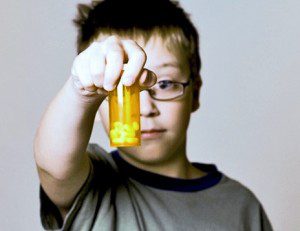
Geographically, children in the southern U.S. states are diagnosed with ADHD far more often than children living in the west — by a rate of nearly 63 percent. North Carolina was one of the first states to implement consequential accountability statutes, and currently has an ADHD diagnosis rate of over 16 percent. In contrast, California was one of the last states to implement these policies, and has a diagnosis rate of 6.2 percent. [source]
In many states, scores for children diagnosed with ADHD are not counted, which also helps to raise the overall test scores of the class.
So, tell me again why ADHD is treated as a chemical imbalance?
Jonah’s Summer
Here sat Jonah, his young life falling apart. His home life was chaotic, his loyalty torn between two emotional parents who were manipulating each other and putting him in the middle of their tsunami. His failing grades, lack of interest in school, inattention on the athletics field and erratic behavior were blamed on a chemical imbalance in his brain. He was put on Ritalin to help him focus and concentrate, then put on display for everyone to watch him.
Looking at his story objectively, Jonah was no different from the wolverine at the zoo. Around him had been created an emotionally abusive home situation and a school system that didn’t know how to teach or stimulate him; then we wonder why he acted “differently”, and distracted. So he was medicated, simply to make an unnatural situation appear normal.
As Jonah became more-and-more of a “problem child” at home, the parents dropped him off early at games and practices.
“This team is like my family now,” he told me one day before a game, “it is the most important thing to me.”
Jonah did not care that he was not getting much playing time. He was just happy to be a part of the team and became the emotional leader of the group. He was the first one out of the dugout after we scored a run, the first one to greet the pitcher after an inning pitched, and always the one to support the rest of the players regardless of the final score. His energy was contagious. He cracked jokes, loosened things up, and was just happy to be at the field and outside his chaotic home life. He was able to be a kid again.
As the summer came to an end, Jonah went to live with his father full-time and had some stability for once. As the divorce process was coming to an end, the chaos lightened up and suddenly his performance also improved. He started to gain confidence and was showing glimpses of the player that we had heard about all off-season.
The team had also come together at this point and we were in the championship game to qualify for the state tournament – a first for this community. The field was packed with spectators with high energy, enthusiasm and excitement. One problem though; we had no pitchers left. We had used all our big guns to get to this point and as we scanned our roster we were out of options. Jonah had always thrown a little bit here-and-there in practice but had not been given an opportunity in a big game.
“Jonah,” I said as I handed him the game ball, “throw strikes today. We need you.”
His eyes lit up, eyes wide open, and showed the team the biggest smile I’ve ever seen in my life. I don’t know if I have ever seen a human being more happy in my life.
“Really?” He asked, “This is awesome! I am going to shut them down.”
He gave us both hugs and the team gained a huge burst of energy and jumped all over Jonah ready to try to do the impossible. However, the parents were not as enthused. Some came up to the dugout screaming at us, “What are we trying to lose now?” “We made it this far to throw away the season?”… “Why are you rewarding his bad behavior?”
Unfortunately, all these comments were made in front of Jonah and the team. But the kids did not buy in to the negativity; they were just kids playing a game with their friends. Looking at their parents with a bit of bewilderment, they must have subconsciously known that Jonah wasn’t the problem at that moment — it was the adults who were living vicariously through their kids.
Jonah’s Dad was in the background, as always, and shared the same expression as Jonah. He was the outcast of the parents clique at the games and usually stuck to himself. They had a rough summer together but things were finally coming together. That day, he was proud, enthused, and ready for the game.
The kids were behind Jonah. They knew all the struggles he was having and they remembered him being there for them throughout the summer. They saw true leadership in Jonah even as he sat on the bench, and appreciated the spirit he brought to the team. Now it was their turn to support Jonah.
Before the game we told the team, “You go to school and you are told to grow up; at home when you are loud, you are told to be quiet and grow up; you go anywhere in public and you are told to be quiet and grow up. Not today. Today you get to be kids. Be loud. Be obnoxious. Have fun. Be a kid.”
On paper, we had nowhere near the talent of the other team. But every time they hit one of Jonah’s pitches, his teammates always seemed to come up with an incredible play.
In our final at bats of the last inning, Jonah was up and I was coaching third base trying to figure out how we are going to keep this up. I gave him a clap of the hands and told him to swing away and have some fun. He pounded his bat on the dirt and gave me a big smile. The next pitch he connected and the ball sailed deep into the night sky. As it kept drifting, the kids piled off the bench to watch – one of those moments where time just stood still. His father, standing behind the outfield fence was waving his arms as if trying to guide the ball over the fence. Their outfielder raced back-and-back-and-back before stopping and watching the ball land over the fence!
The kids were jumping and screaming and trying to chase Jonah around the bases. The parents were behind the backstop hugging each other as well. Everyone was in complete shock as it looked like a scene from a movie; the rain poured down as Jonah rounded the mud-covered infield, and our bench had cleared out as if waiting for a King’s arrival home.
Which is not too far off from the truth; Jonah had arrived home. The atmosphere was amazing, everyone was running, screaming and hugging in the cold, windy rain.
After the pandemonium passed, we got the opportunity to talk to Jonah’s proud father.
“Thank you for giving him the chance,” his father said, “it has been a rough year and he needed someone to believe in him.”
“I guess the meds started to kick in,” we asked.
“What?” his father yelled, “I had him for the end of the summer and I took him off that stuff about a month ago. I don’t care what anyone says. He is not sick, he is just going through a rough time.”
A few years later, Jonah was named high-school athlete of the year in his home state and is on a full scholarship in college.
He never took his ADHD medication again.
Our kids take their emotional cues from us. But, considering how our society currently treats children with so-called behavioral problems, maybe it should be the other way around.
Recommended articles by Cortland and Irwin:
- Over The Rainbow: The (Yellow Brick) Road to Enlightenment
- Licensed to Kill: Psychiatry, Big Pharma and the State-Sanctioned Drug Cartel
- Celebrating Genocide – Christopher Columbus’ Invasion of America
- The Craving Behind the Craving: Addiction as a Spiritual Disease
- Bipolar? Or Gifted? The Modern Day Epidemic of Medicated “Madness”
- Suicide: Falling Through the Cracks of Stigma
- The Fictions Surrounding ADHD and the “Chemical Imbalance” Theory of Mental Illness
- Schizophrenia – Psychosis or Something More Profound?
- The War On Drugs: How the “Land of the Free” Became the “Home of the Slaves” for 2.3 Million Americans
- What If We Are The “Bad Guys”?
[pro_ad_display_adzone id=”110027″]

